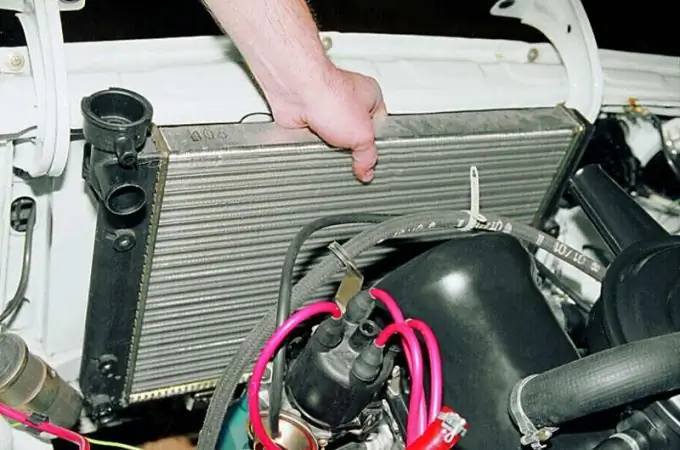- Author Maria Gibbs [email protected].
- Public 2023-12-16 03:05.
- Last modified 2025-01-22 17:48.
The radiator is an important part of a car's cooling system. Like other parts, it sometimes needs repair. Repairing the radiator requires draining the water or other coolant. Fortunately, it is not that hard work to send a car for service.

Necessary
- - drain pan or bucket;
- - hose;
- - a pair of waterproof work gloves;
- - ready-made coolant -37C;
- - safety glasses.
Instructions
Step 1
Place your hand on the hood to measure the current engine temperature. For the safety and efficiency of the process of draining the spent antifreeze or other coolant, it is necessary that the work be carried out on a cold engine. Please note that the radiator fluid is under very high pressure while maintaining operating temperature.
Step 2
Proceed with external cleaning of the radiator. Clean the grate with a direct jet of water from the hose. Adjust the water pressure as too strong can crush the metal of the radiator. As practice shows, it makes sense to carry out cleaning every 15000-17000 km.
Step 3
Prepare a coolant drain. To do this, install a drain bucket or any other container that fits under the front bumper of the car. It is necessary to make sure that the liquid outlet from the radiator will be carried out correctly. After all, it is very toxic and therefore harmful to the environment. It is important to remember that the container that will be used for draining cannot be further used for another purpose than storing coolant. And it's better to just throw out this container in a specially designated place.
Step 4
Pay attention to the radiator cap. It must be in good working order and keep the "cooler", preventing it from flowing out of the cooling system. Rust in the mount and spring indicates that it is time to replace the cover with a new one.
Step 5
Remove waste fluid. To do this, squeeze the radiator valve using a special handle. Remember to wear gloves and safety goggles before starting to drain the liquid. Drain all liquid into a drainage container. Wait until the radiator is completely empty. Let it dry thoroughly before proceeding to dismantle it or replace the coolant.






